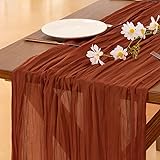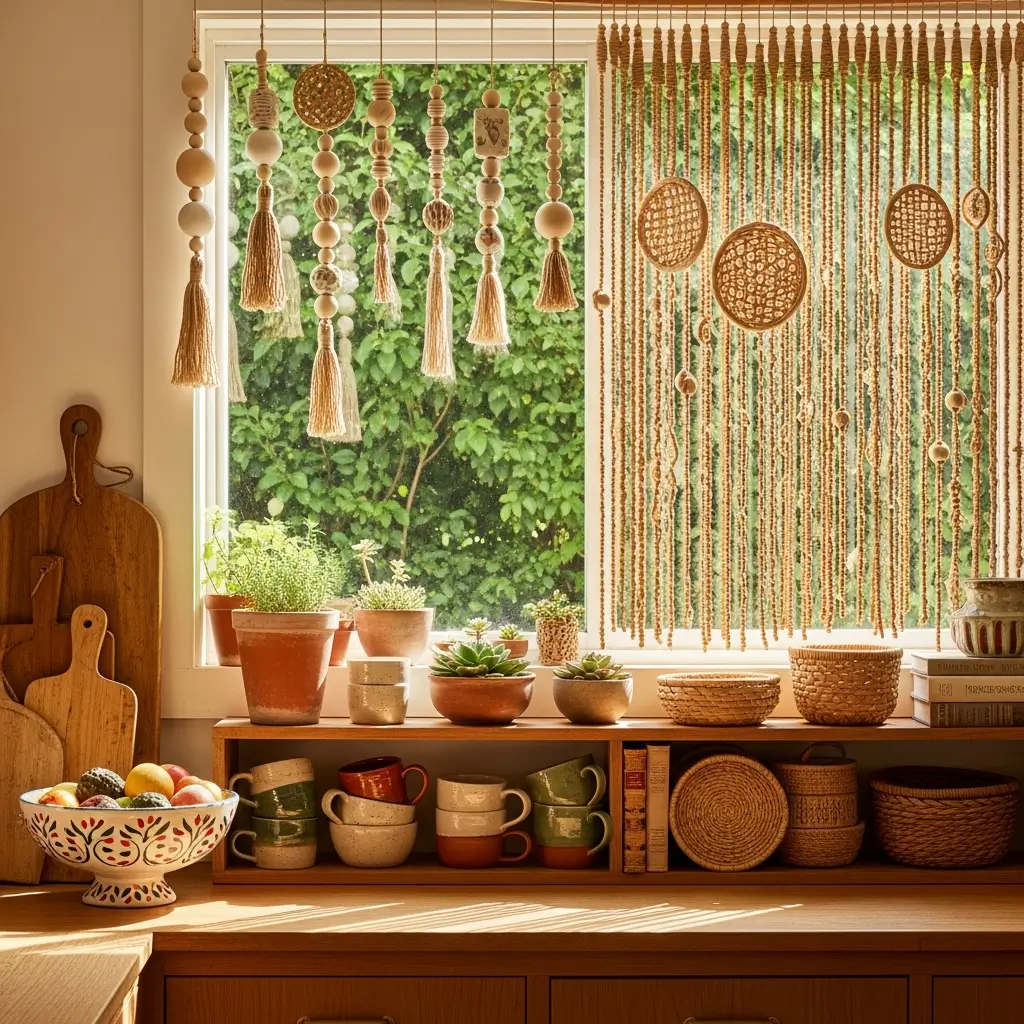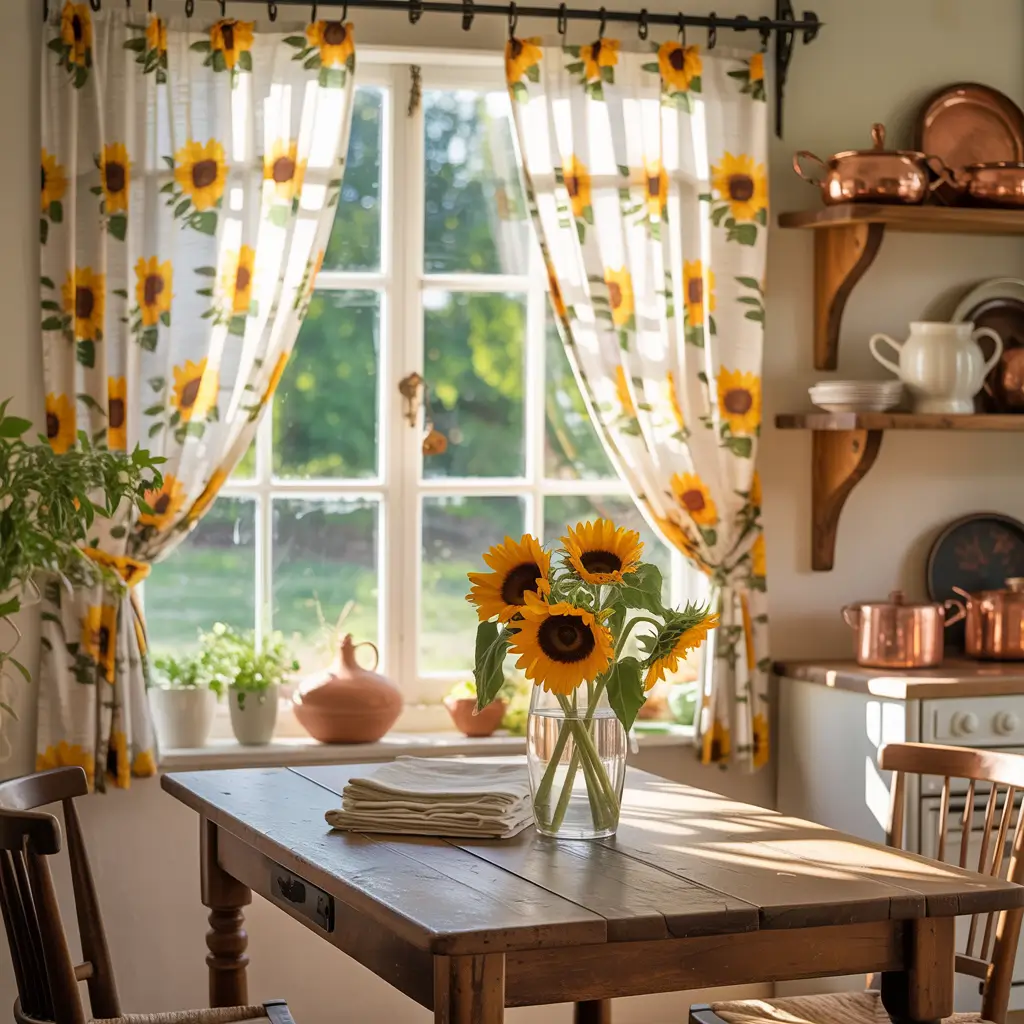15 Inspiring Open Floor Plan Kitchen Dining Living Ideas to Try
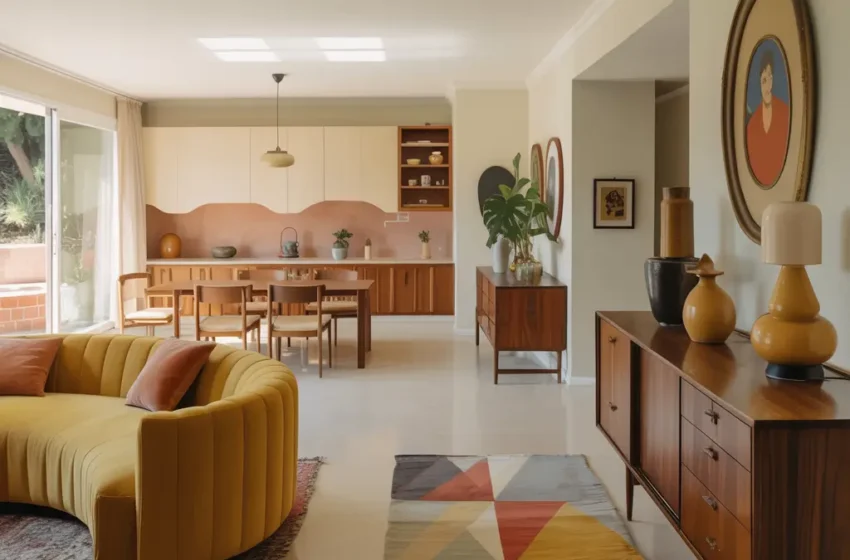
Owala FreeSip Insulated Stainless Steel Water Bottle with Straw, BPA-Free Sports Water Bottle, Great for Travel, 24 Oz, Denim
$29.99 (as of November 12, 2025 14:23 GMT +00:00 - More infoProduct prices and availability are accurate as of the date/time indicated and are subject to change. Any price and availability information displayed on [relevant Amazon Site(s), as applicable] at the time of purchase will apply to the purchase of this product.)STANLEY Quencher H2.0 Tumbler with Handle and Straw 40 oz | Flowstate 3-Position Lid | Cup Holder Compatible for Travel | Insulated Stainless Steel Cup | BPA-Free | Plum
$26.55 (as of November 12, 2025 14:23 GMT +00:00 - More infoProduct prices and availability are accurate as of the date/time indicated and are subject to change. Any price and availability information displayed on [relevant Amazon Site(s), as applicable] at the time of purchase will apply to the purchase of this product.)Rubbermaid Brilliance Food Storage Containers BPA Free Airtight Lids Ideal for Lunch Meal Prep & Leftovers Set of 5 (3.2 Cup)
$27.99 (as of November 12, 2025 14:23 GMT +00:00 - More infoProduct prices and availability are accurate as of the date/time indicated and are subject to change. Any price and availability information displayed on [relevant Amazon Site(s), as applicable] at the time of purchase will apply to the purchase of this product.)Etekcity Food Kitchen Scale, Digital Grams and Ounces for Weight Loss, Baking, Cooking, Keto and Meal Prep, LCD Display, Medium, 304 Stainless Steel
$13.99 (as of November 12, 2025 14:23 GMT +00:00 - More infoProduct prices and availability are accurate as of the date/time indicated and are subject to change. Any price and availability information displayed on [relevant Amazon Site(s), as applicable] at the time of purchase will apply to the purchase of this product.)Alpha Grillers Meat Thermometer Digital - Instant Read Food Thermometer for Cooking and Grilling Stocking Stuffers for Men Christmas Gifts for Men
$13.58 (as of November 12, 2025 14:23 GMT +00:00 - More infoProduct prices and availability are accurate as of the date/time indicated and are subject to change. Any price and availability information displayed on [relevant Amazon Site(s), as applicable] at the time of purchase will apply to the purchase of this product.)Amazon Basics Digital Kitchen Scale with LCD Display, Batteries Included, Weighs up to 11 pounds, Black and Stainless Steel
$9.89 (as of November 12, 2025 14:23 GMT +00:00 - More infoProduct prices and availability are accurate as of the date/time indicated and are subject to change. Any price and availability information displayed on [relevant Amazon Site(s), as applicable] at the time of purchase will apply to the purchase of this product.)Owala SmoothSip Slider Insulated Stainless Steel Coffee Tumbler, Reusable Iced Coffee Cup, Hot Coffee Travel Mug, BPA Free 12 oz, Vanilla Bean
$24.99 (as of November 12, 2025 14:23 GMT +00:00 - More infoProduct prices and availability are accurate as of the date/time indicated and are subject to change. Any price and availability information displayed on [relevant Amazon Site(s), as applicable] at the time of purchase will apply to the purchase of this product.)HydroJug Traveler - 32 oz Water Bottle with Handle & Flip Straw - Fits in Cup Holder, Leak Resistant Tumbler-Reusable Insulated Stainless Steel & Rubber Base - Gifts for Women & Men, Pink Sand
$34.99 (as of November 12, 2025 14:23 GMT +00:00 - More infoProduct prices and availability are accurate as of the date/time indicated and are subject to change. Any price and availability information displayed on [relevant Amazon Site(s), as applicable] at the time of purchase will apply to the purchase of this product.)KitchenAid Classic Multifunction Can Opener and Bottle Opener Easy to Use, Razor Sharp Stainless Steel Cutting Wheel, Soft Ergonomic Handles, Black
$14.35 (as of November 12, 2025 14:23 GMT +00:00 - More infoProduct prices and availability are accurate as of the date/time indicated and are subject to change. Any price and availability information displayed on [relevant Amazon Site(s), as applicable] at the time of purchase will apply to the purchase of this product.)Socomi Thanksgiving Fall Table Runner Terracotta Cheesecloth Gauze Burnt Orange Boho Rustic Farmhouse 120 inch 10FT Cheese Cloth Runner for Wedding Party Baby Shower Home Decor Holiday Decorations
$11.99 (as of November 12, 2025 14:23 GMT +00:00 - More infoProduct prices and availability are accurate as of the date/time indicated and are subject to change. Any price and availability information displayed on [relevant Amazon Site(s), as applicable] at the time of purchase will apply to the purchase of this product.)Remember when houses had a room for everything and everything stayed in its room? Yeah, me neither, and honestly, I don’t miss it.
My childhood home had so many walls that family gatherings felt like we were playing telephone through doorways.
Now? My open floor plan means I can cook dinner, help with homework, and catch up on Netflix all without missing a beat.
Open floor plans combining kitchen, dining, and living spaces have completely revolutionized how we live. They’re not just trendy – they’re practical, social, and they make even modest homes feel palatial.
After living in both closed-off boxes and wide-open spaces (and helping design quite a few), I’ve learned that open floor plans aren’t one-size-fits-all. They’re as unique as the people living in them.
Whether you’re planning a renovation or just dreaming about knocking down walls, these 15 ideas will show you how to create an open floor plan that actually works for real life.
Because let’s face it – Instagram-perfect spaces are great, but you need somewhere to actually live, eat, and occasionally hide the mess when company’s coming.
Modern Minimalist Open Floor Concept

Modern minimalist open floor plans make me feel like I have my life together, even when I absolutely don’t. There’s something about clean lines and clutter-free surfaces that creates instant zen. The trick? Making minimalism livable rather than looking like a furniture showroom.
I learned this the hard way when I first attempted minimalism. Turns out, having nowhere to put your mail, keys, or that random stuff everyone accumulates doesn’t equal minimalist success – it equals chaos. Real minimalist design incorporates hidden storage everywhere. Think kitchen islands with secret compartments, dining benches with lift-up seats, and living room furniture that works overtime.
The beauty of minimalist open plans lies in their flexibility. Without visual clutter, you can easily change the room’s purpose. My dining table doubles as a workspace, the kitchen island becomes a bar for parties, and the living area transforms for yoga sessions. It’s like having multiple homes in one.
Making Minimalism Work
Key elements for livable minimalism:
- Consistent color palette throughout all zones
- Built-in storage that disappears when closed
- Multi-functional furniture pieces
- Quality over quantity in every choice
Cozy Farmhouse Open Plan Design
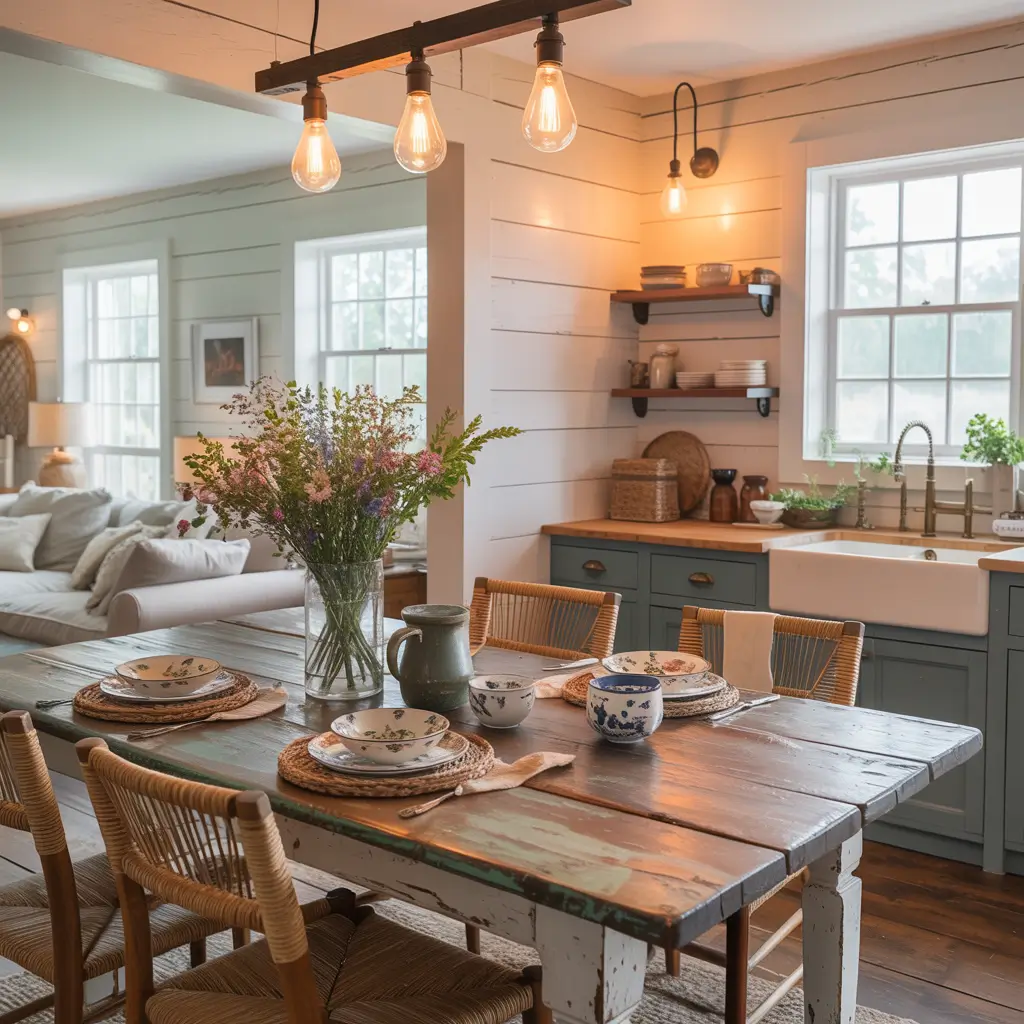
Farmhouse open plans make me want to bake bread and host Sunday dinners for twenty. They’re warm, welcoming, and somehow make everyone feel like family. The key is balancing rustic charm with modern convenience – nobody actually wants to live like it’s 1890.
My love affair with farmhouse design started when visiting a friend’s renovated barn conversion. Exposed beams, shiplap walls, and a massive farmhouse sink created this perfect blend of old and new. The open plan meant these elements flowed throughout the space, creating cohesion without feeling theme-parky.
What makes farmhouse open plans special is their built-in character. Distressed wood, mixed metals, and vintage finds add layers of interest that minimal designs can’t match. Plus, farmhouse style is forgiving – a little wear and tear just adds to the charm.
Farmhouse Elements That Matter
Must-haves for authentic farmhouse feel:
- Large kitchen island for gathering
- Mixed seating options (benches, chairs, stools)
- Natural materials like wood and stone
- Vintage or vintage-inspired lighting
Scandinavian Light and Airy Layout
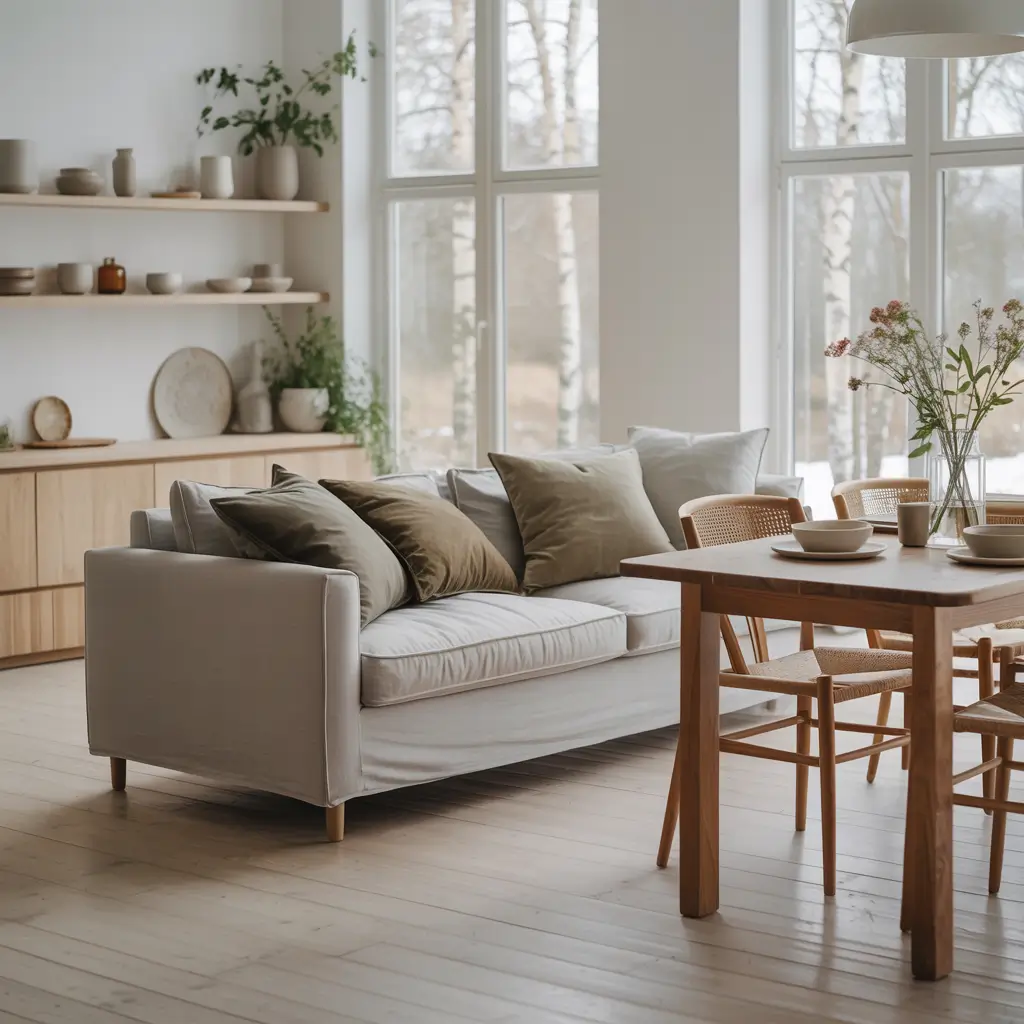
Scandinavian open floor plans make me want to move to Stockholm and wear only neutrals. They’re bright, peaceful, and surprisingly warm despite all that white. The secret? Layers of texture and an obsession with natural light.
I fell hard for Scandi style while helping a friend redesign her dark apartment. We painted everything white, added light wood floors and furniture, and suddenly her cave became a sanctuary. The open plan amplified the effect, bouncing light throughout the entire space.
Scandinavian design works because it prioritizes function without sacrificing beauty. Every piece serves a purpose, but that purpose includes bringing joy. It’s minimalism with soul, hygge in visual form.
Creating Scandi Magic
Essential Scandinavian elements:
- Maximum natural light (add windows if possible)
- Warm wood tones to balance cool whites
- Cozy textiles in neutral tones
- Plants for life and color
Also Read: 15 Elegant Semi Open Kitchen Ideas for Stylish Spaces
Industrial Chic Open Space

Industrial open plans make me feel cooler than I actually am. They’re edgy, urban, and perfect for people who think exposed pipes are decorative features (guilty). The challenge is keeping industrial from feeling cold or unfinished.
My industrial awakening happened in a converted loft where concrete floors met exposed brick walls and metal beams crossed the ceiling. The open plan emphasized these architectural elements, making them features rather than flaws. It felt authentic in a way that suburban recreations sometimes miss.
The key to industrial chic is balance. Too much concrete and metal creates a warehouse vibe. Add warm wood, soft textiles, and maybe some plants, and suddenly that edge becomes inviting.
Industrial Elements That Work
Building your industrial look:
- Mixed metals in fixtures and furniture
- Raw materials like concrete and brick
- Open shelving with metal frames
- Edison bulb lighting for warmth
Coastal Breeze Living-Dining-Kitchen
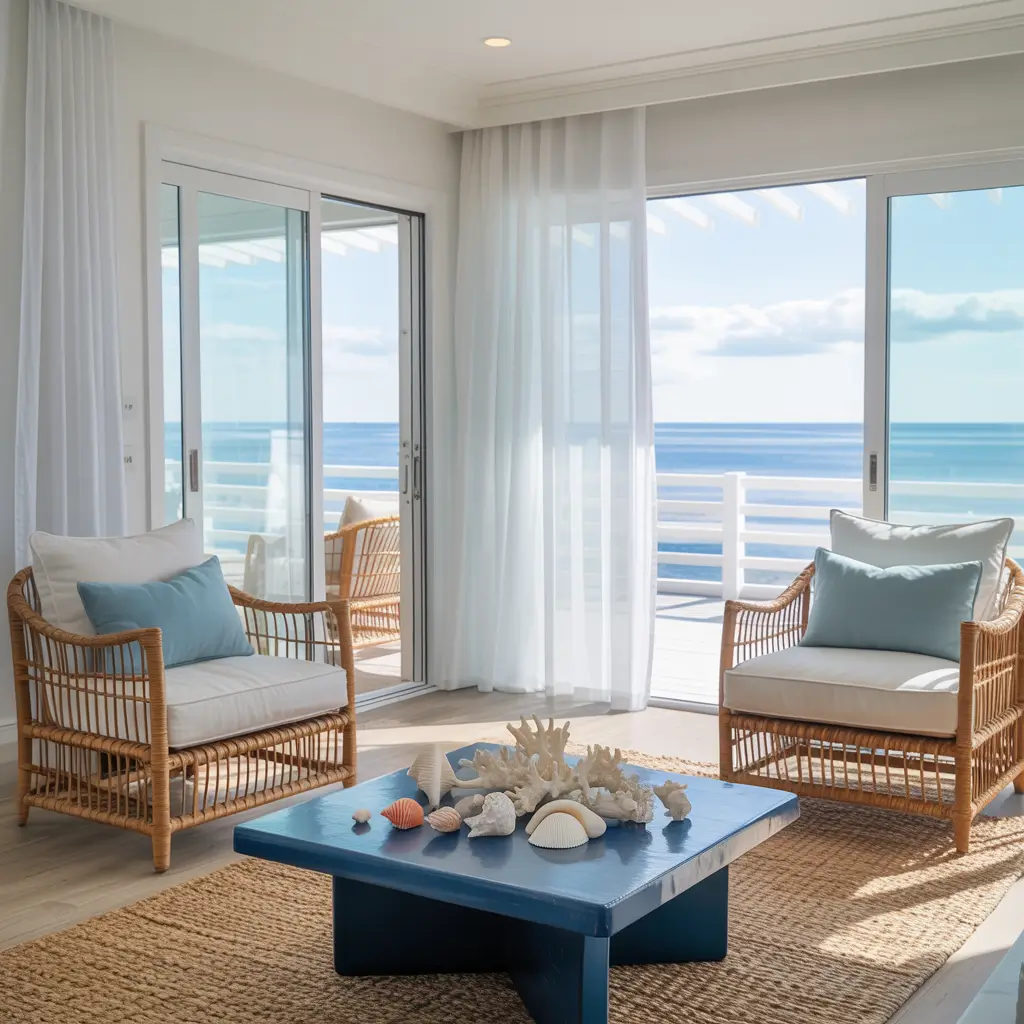
Coastal open floor plans transport me straight to vacation mode. They’re breezy, relaxed, and make every meal feel like it should come with a ocean view. You don’t need beachfront property to capture that coastal feeling – just the right colors and textures.
I discovered coastal style’s magic during a beach house rental. The seamless flow between cooking, dining, and lounging spaces mimicked the easy flow of beach life. Back home, I recreated that feeling with light colors, natural textures, and strategic use of blue accents.
What makes coastal design work in open plans is its inherent casualness. Nothing feels too precious or formal. Slipcovered sofas, weathered wood tables, and easy-care surfaces create spaces meant for living, not just looking.
Coastal Design Without Clichés
Creating authentic coastal vibes:
- Natural materials like rope, rattan, and driftwood
- Light, bleached wood tones
- Blue accents that don’t scream “nautical”
- Plenty of white to maximize light
Bohemian Eclectic Open Layout

Bohemian open layouts are for people who think more is more and matching is overrated. They’re personal, layered, and full of stories. Every corner holds a treasure, every surface displays memories.
My boho journey started accidentally – I just kept collecting things I loved. Eventually, my open floor plan became this eclectic gallery of textures, patterns, and colors. What could have been chaos works because the open layout gives everything room to breathe.
The secret to boho style is intentional layering. Yes, you can mix patterns, but they need a common thread. Maybe it’s a color that repeats, a texture that echoes, or a theme that ties things together. Without walls to separate zones, this cohesion becomes even more important.
Boho Without the Chaos
Making eclectic work:
- Repeat colors throughout all zones
- Layer textures for depth
- Group collections for impact
- Balance busy areas with calm spaces
Also Read: 15 Trendy Modern Kitchen Design Open Concept Ideas for Today
Mid-Century Modern Flow

Mid-century modern open plans make me feel like Don Draper, minus the questionable life choices. They’re sleek, sophisticated, and somehow still feel fresh 70 years later. The style was basically made for open floor plans – those architects knew what they were doing.
I grew up in a mid-century house and hated it. Now? I’d kill for those original walnut cabinets and walls of windows. The open floor plan emphasized the indoor-outdoor connection that defines the style. Everything flowed together in this organic way that modern homes try desperately to recreate.
Mid-century design succeeds because form truly follows function. Clean lines aren’t just aesthetic – they make spaces feel larger. Low furniture maintains sightlines. Built-ins maximize space without cluttering it.
Mid-Century Must-Haves
Nailing the mid-century look:
- Low-profile furniture that doesn’t block views
- Warm wood tones (walnut, teak)
- Geometric patterns used sparingly
- Statement lighting fixtures
Rustic Wood and Stone Open Plan

Rustic open plans make me want to wear flannel and build fires. They’re grounded, authentic, and connect us to nature even when we’re inside. The materials themselves become the decoration.
I experienced peak rustic in a mountain cabin where massive log beams and stone fireplaces dominated the open space. Instead of feeling heavy, the openness let these substantial elements breathe. The kitchen’s rough-hewn wood connected visually to the living room’s stone, creating natural flow.
Rustic design works in open plans because it’s inherently informal. These aren’t precious spaces – they’re meant for muddy boots, big dogs, and real life. The materials improve with age and use.
Rustic Elements That Matter
Creating authentic rustic spaces:
- Natural, unfinished woods with visible grain
- Stone accents (fireplace, backsplash, flooring)
- Wrought iron or blackened steel details
- Warm, layered lighting
Luxury Contemporary Open Concept
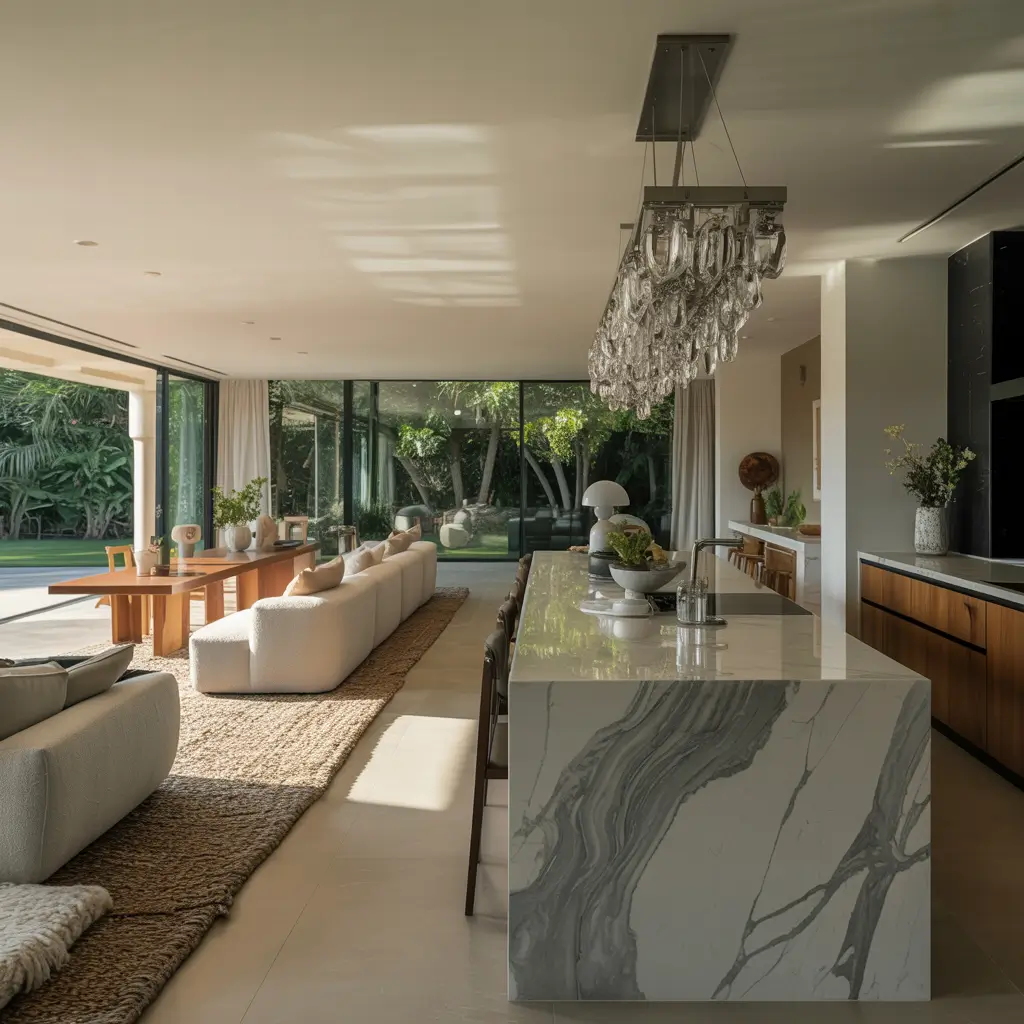
Luxury contemporary open plans make me feel like I should be sipping champagne while discussing art. They’re sleek, sophisticated, and unapologetically high-end. Every surface gleams, every line flows perfectly.
My first taste of true luxury contemporary came while house-sitting for wealthy friends. Their marble waterfall island flowed into custom Italian cabinets which led to a living area with furniture that cost more than my car. The open plan showcased each element like a gallery.
What separates luxury contemporary from just expensive is the attention to detail. Perfect proportions, flawless finishes, and materials that make you want to touch them. In open plans, this consistency across zones creates seamless elegance.
Luxury Details That Deliver
Elements of luxury design:
- Premium materials like marble, exotic woods
- Integrated appliances that disappear
- Custom millwork throughout
- Layered, programmable lighting
Also Read: 15 Gorgeous Open Plan Kitchen Styles to Try Now
Compact Urban Apartment Layout
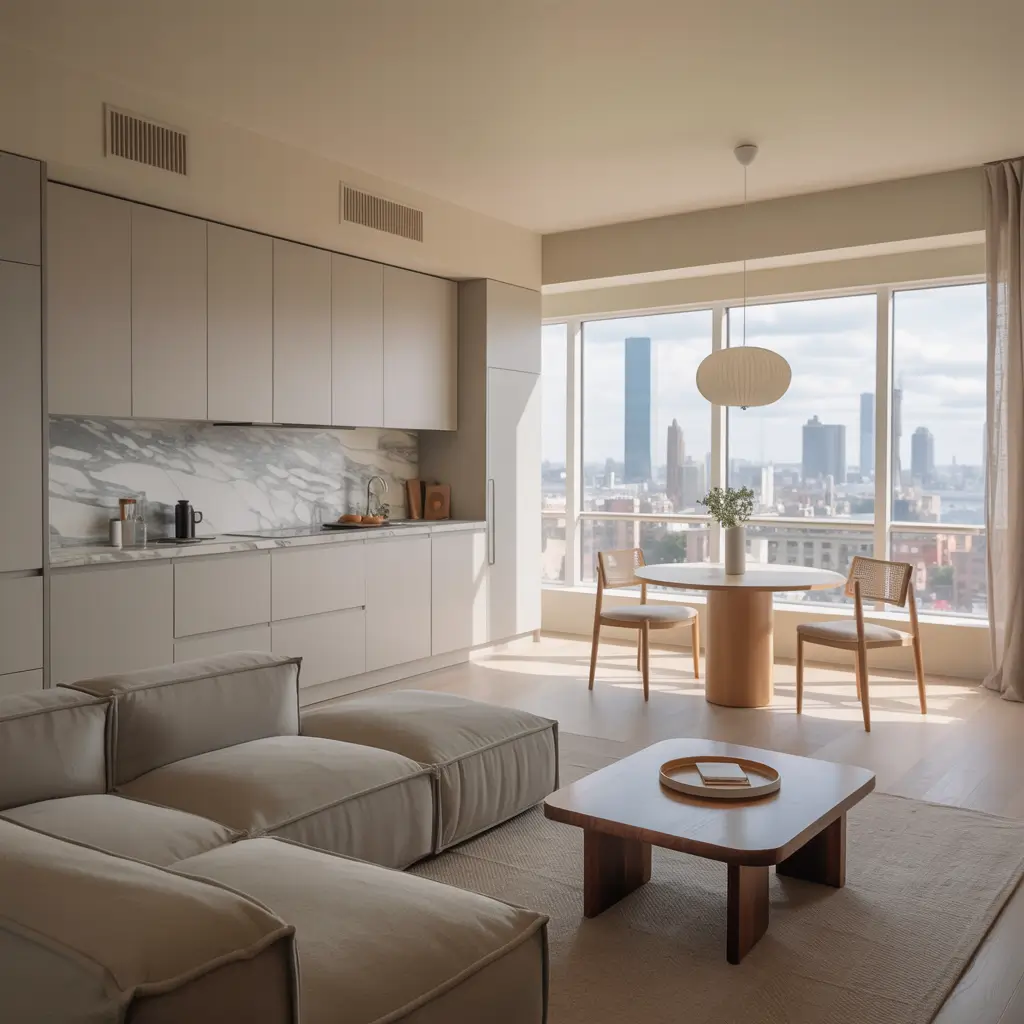
Compact urban open layouts prove that size doesn’t determine style. They’re clever, efficient, and make 600 square feet feel like 1,200. The secret? Every element serves multiple purposes.
I learned compact living the hard way in my first city apartment. The kitchen island doubled as dining table, the sofa separated living from sleeping areas, and built-in storage hid everything else. The open plan was essential – walls would have made it feel like a shoebox.
Small open plans succeed through careful planning. Zones need definition without walls, furniture must be scaled appropriately, and storage has to be everywhere. It’s like Tetris, but for living spaces.
Small Space, Big Impact
Maximizing compact layouts:
- Multi-functional furniture everywhere
- Vertical storage solutions
- Consistent color palette
- Mirrors to expand visual space
Neutral Palette Open Floor Harmony

Neutral palette open plans calm my chronically overstimulated mind. They’re serene, sophisticated, and surprisingly not boring when done right. The key is playing with texture and tone within your neutral range.
My neutral awakening came after years of color chaos. Painting everything in coordinating shades of beige, gray, and white created this cocoon of calm. The open plan meant these colors flowed seamlessly, creating visual continuity that made everything feel larger and more peaceful.
Neutrals work brilliantly in open plans because they unify disparate zones. Your kitchen’s warm gray connects to the dining room’s greige, which flows into the living room’s soft beige. It’s subtle but powerful.
Making Neutrals Interesting
Adding depth to neutral palettes:
- Layer different textures within the same color
- Use various shades of your chosen neutrals
- Add metallics for subtle shine
- Include natural elements for life
Bold Color Zone Division Design

Bold color open plans are for people who think beige is a four-letter word. They’re vibrant, energetic, and definitely not for the faint of heart. Color becomes your tool for defining zones without walls.
My color journey started with one accent wall and spiraled from there. Now, my kitchen features deep emerald, the dining area rocks mustard yellow, and the living room grounds everything in rich navy. The open plan lets these colors conversation rather than clash.
Using color to define zones requires confidence and planning. Colors need to relate without matching, creating flow while maintaining distinction. It’s like conducting a symphony where every section plays its part.
Color Zoning Success
Making bold colors work:
- Choose a cohesive color palette first
- Use color to define functional zones
- Balance bold with neutral elements
- Repeat accent colors throughout
Natural Light-Filled Open Home
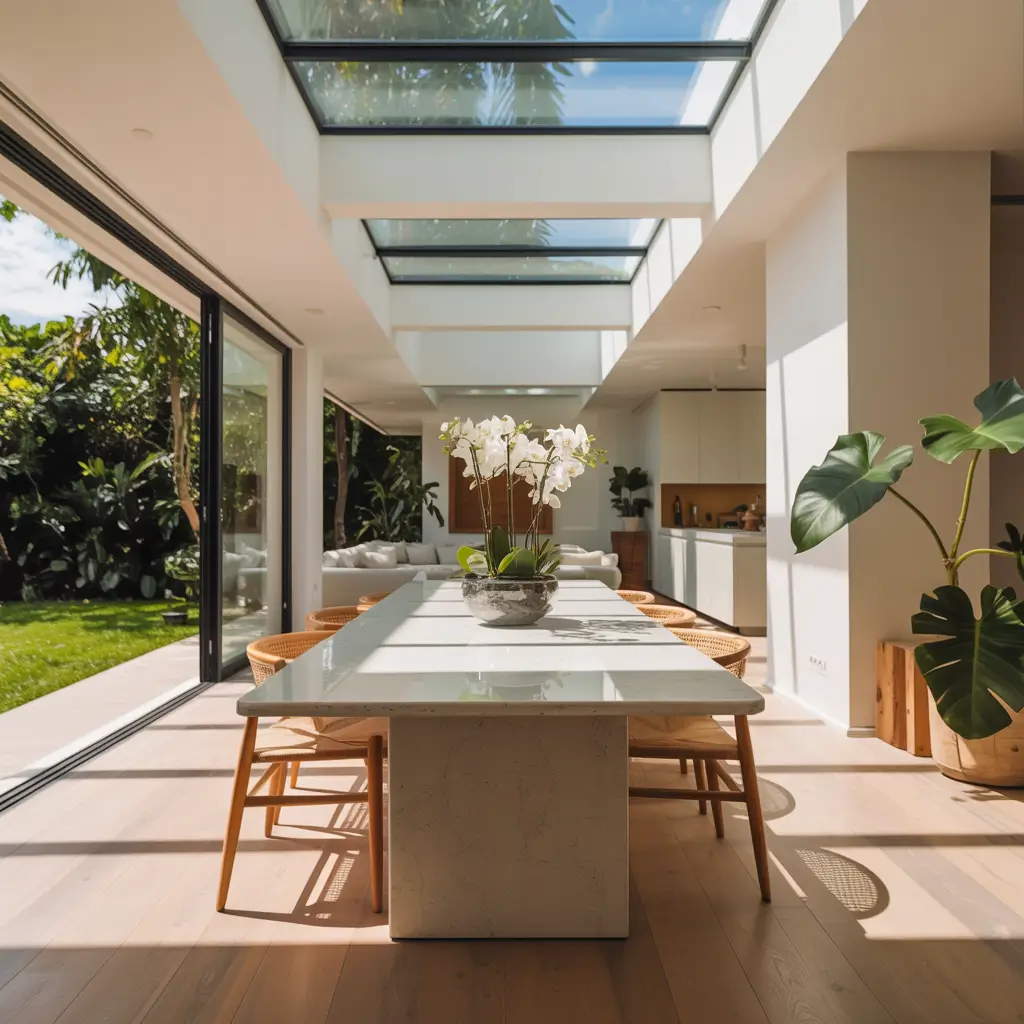
Natural light-filled open plans make me never want to leave home. They’re bright, cheerful, and save on electricity bills. The openness maximizes every ray of sunlight, spreading it throughout your space.
I became a natural light evangelist after adding skylights to my kitchen. Suddenly, the entire open floor plan felt different. Morning light dances across all three zones, afternoon sun warms the dining area, and evening light makes the living room glow.
Maximizing natural light in open plans involves more than just windows. It’s about removing obstacles, choosing reflective surfaces, and orienting furniture to take advantage of light patterns throughout the day.
Maximizing Natural Light
Light-enhancing strategies:
- Remove unnecessary window coverings
- Use light colors to reflect sunlight
- Position mirrors strategically
- Choose furniture that doesn’t block windows
Family-Friendly Functional Layout
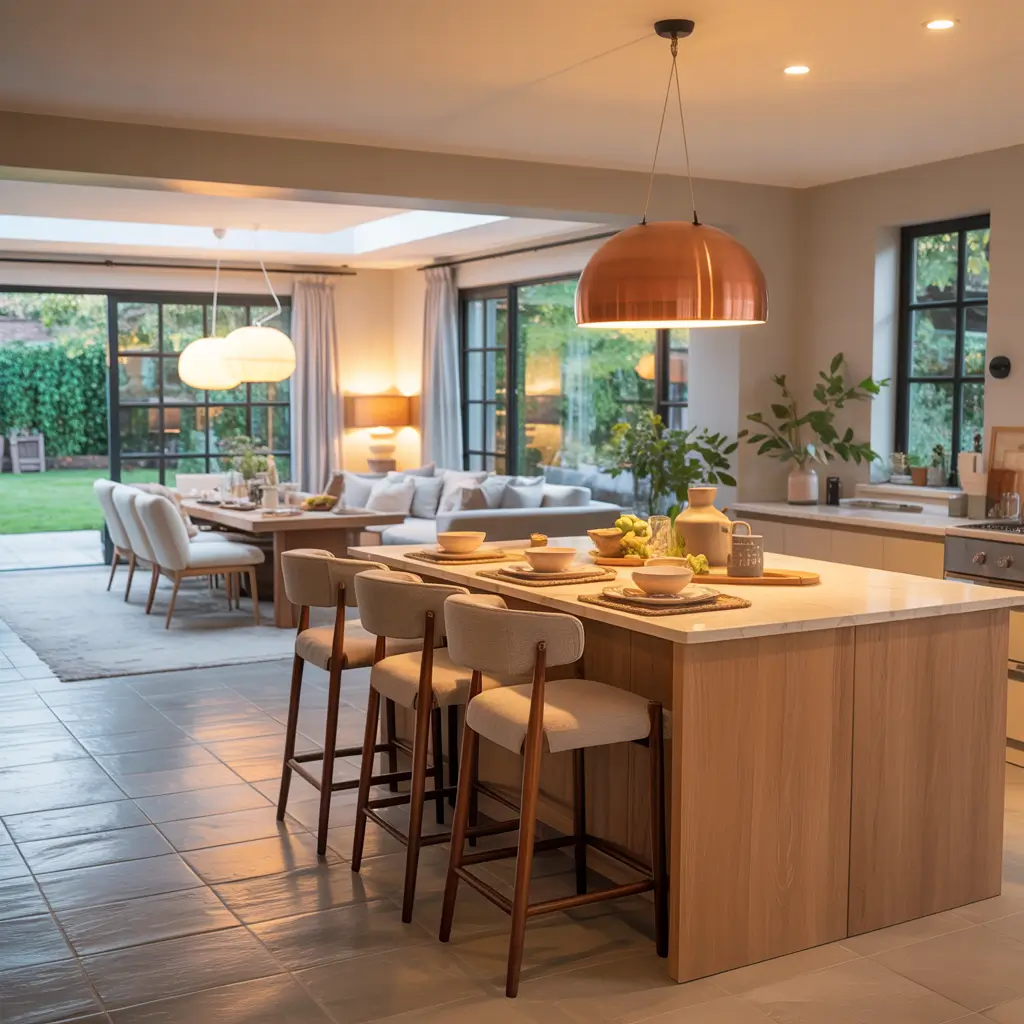
Family-friendly open plans acknowledge that kids exist and design accordingly. They’re durable, flexible, and include plenty of space for toy explosions. FYI, they also hide messes remarkably well when designed right 🙂
My family-friendly revelation came after having kids. Our pristine open plan became a battlefield. Now, performance fabrics cover everything, storage hides everywhere, and the layout accommodates everything from homework to dance parties.
The key to family-friendly design is anticipating chaos. Open sightlines let you supervise from anywhere. Durable materials handle abuse. Strategic storage contains the madness. It’s real life, beautifully designed.
Family-Friendly Features
Kid-proof design elements:
- Rounded corners on everything
- Wipeable, stain-resistant surfaces
- Closed storage for toy containment
- Flexible zones for changing needs
Elegant Transitional Open Concept

Transitional open plans bridge traditional and contemporary, creating spaces that feel both timeless and current. They’re sophisticated without being stuffy, comfortable without being casual.
I discovered transitional style while trying to merge my traditional furniture with a modern home. The result? A perfect balance of classic elements and clean lines. The open plan allowed these different styles to mingle naturally, creating something entirely new.
Transitional design works because it takes the best from both worlds. Traditional warmth meets modern simplicity. Ornate details balance minimal elements. It’s the design equivalent of having your cake and eating it too.
Transitional Balance Points
Creating transitional harmony:
- Mix furniture styles thoughtfully
- Balance ornate with simple
- Use neutral colors with rich accents
- Layer traditional and modern lighting
Creating Your Perfect Open Floor Plan
There you have it – 15 ways to approach the open floor plan that’s taken over modern living room.
Whether you lean minimalist or maximalist, coastal or industrial, there’s an open concept that’ll transform how you live, cook, and gather.
The beauty of open floor plans isn’t just the space – it’s the life that happens within them. They force us to think holistically about our homes, considering how each area relates to the others.
They encourage connection, whether that’s keeping an eye on kids or chatting with guests while cooking.
Ready to embrace open floor plan living? Start by identifying what matters most to you. Need defined zones? Consider color or furniture placement. Want maximum flexibility?
Think about multi-functional pieces. Crave coziness in openness? Layer textures and lighting. The perfect open floor plan is the one that works for your real life, mess and all.
Now excuse me while I go pretend my own open floor plan looks as good as these ideas. Spoiler alert: it doesn’t, but at least I can see the disaster from every angle :/










